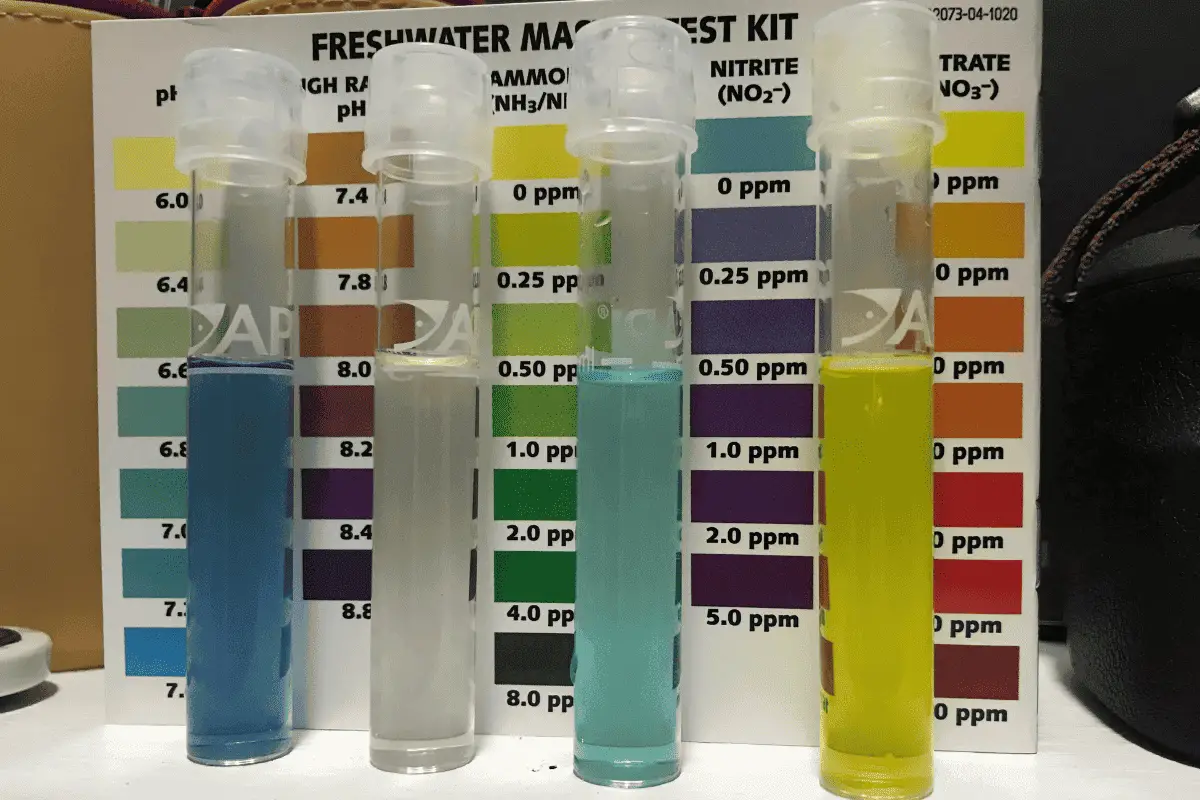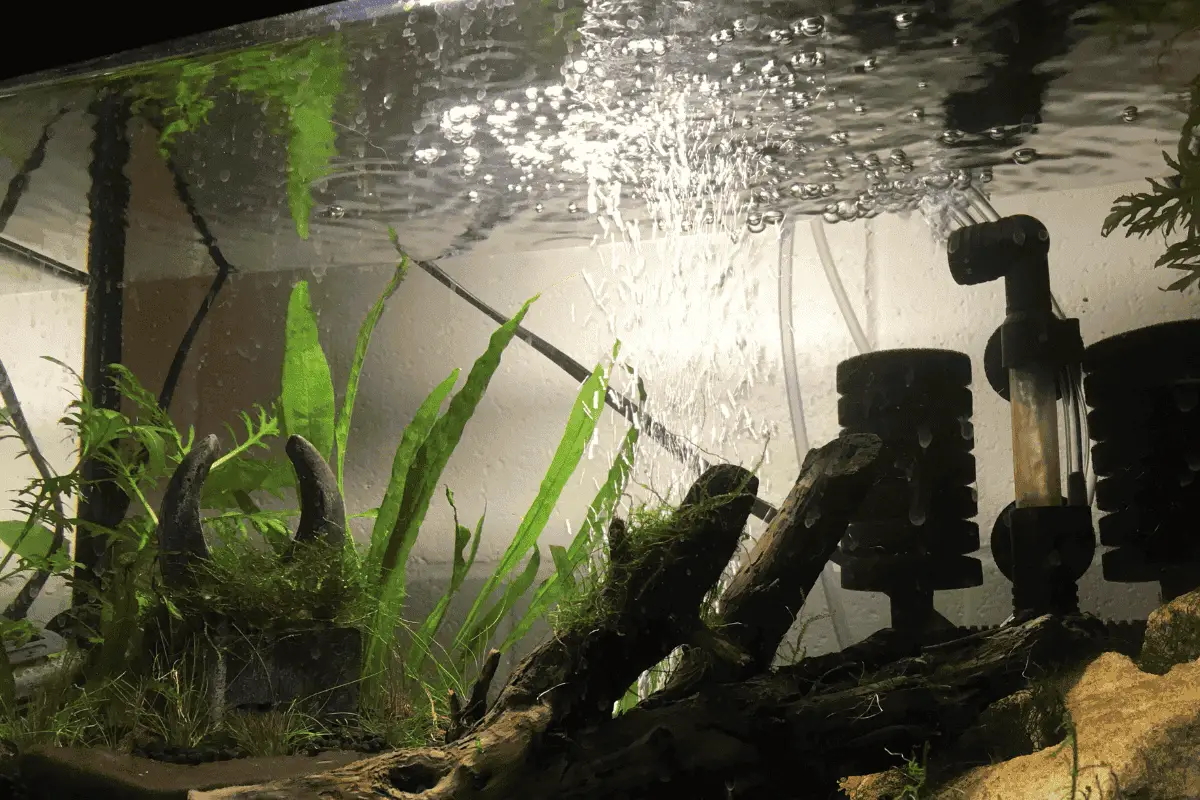I was truly worried when I first saw one of my angelfish with bulging eyes. I had no clue what it meant or how to deal with it.
Thankfully, as time went on, I gained a deeper understanding of this problem and learned effective methods to manage it, and maybe even reduce its symptoms.
In this article, I’ll walk you through what is commonly known as Popeye disease in angelfish. You’ll learn how to tackle it and receive tips on preventing its recurrence.
Let’s get started.

What Exactly Is Popeye Disease in Angelfish?
Popeye disease in angelfish is a condition where one or both eyes of the fish bulge out abnormally.
It’s typically caused by bacterial infections, injuries, or poor water quality, leading to fluid build-up behind the fish’s eyeball.
Also Read: Angelfish Diseases
What Are the Symptoms of Popeye Disease in Angelfish?
The symptoms of Popeye disease in angelfish include:
- Eye Bulging: The most noticeable symptom is one or both eyes protruding significantly more than usual, often resembling a bubble or balloon.
- Cloudiness in the Eye: Affected eyes may become cloudy or opaque, indicating potential infection or tissue damage.
- Reduced Appetite: Fish with Popeye disease might show less interest in food, often due to discomfort or reduced ability to see properly.
- Lethargic Behavior: The fish may become less active, preferring to stay in one part of the tank, which is not normal for healthy angelfish.
- Irritated Eye Area: The area around the affected eye may appear red or inflamed, suggesting irritation or infection.

What Causes Popeye Disease in Angelfish?
Popeye disease in angelfish can be caused by several factors, each contributing to the condition in different ways.
1. Bacterial Infection
This is a frequent cause of Popeye disease. Bacterial infections can be systemic, affecting the entire body, or localized, targeting specifically the eye.
- Presence of Pathogens: Harmful bacteria like Aeromonas or Pseudomonas thrive in poorly maintained aquariums, increasing the risk of infection.
- Compromised Immune System: Stress or poor health in angelfish can weaken their immune response, making them more susceptible to bacterial attacks.
- Secondary Infections: Popeye often follows other illnesses, suggesting a broader health issue in the fish.
2. Injury or Trauma
Physical harm to the eye can also lead to Popeye. This often occurs due to conflicts with other fish or accidental injuries involving tank decor.
- Aggressive Tank Mates: If angelfish cohabit with territorial or aggressive species, they may sustain eye injuries from skirmishes.
- Sharp Decorations: Tanks with rough or sharp objects can pose risks, as angelfish might inadvertently harm their eyes against these surfaces.
- Handling Stress: Inappropriate handling during maintenance or relocation can cause trauma to the delicate eyes of angelfish.

3. Poor Water Quality
Inadequate water conditions are a significant trigger for Popeye, as they create a stressful environment for the fish, leading to various health issues.
- High Nitrate Levels: Elevated levels of nitrates, often due to infrequent water changes, can stress the fish and contribute to Popeye.
- Unstable pH Levels: Fluctuating or inappropriate pH levels in the water can cause stress and vulnerability to diseases, including Popeye.
- Overcrowding: Overcrowded tanks can lead to poor water quality and increased stress, both of which are conducive to the development of Popeye.
4. Parasitic Infection
Parasites are another potential cause of Popeye in angelfish. These infections can directly affect the eye or be part of a larger systemic issue.
- Direct Eye Infection: Certain parasites can infect the eye directly, leading to swelling and the characteristic bulging appearance.
- Systemic Parasitic Infections: Parasites like Ichthyophthirius (Ich) can cause systemic infections that indirectly lead to Popeye due to overall health deterioration.
- Transmission from Other Fish: Parasites can be introduced into a tank through new fish or plants that have not been properly quarantined, spreading to resident angelfish.
5. Insufficient Nutrition
A diet lacking essential nutrients can contribute to Popeye disease by weakening the angelfish’s overall health and immune system.
- Vitamin Deficiencies: Deficiencies in vitamins, particularly Vitamin A, can lead to eye problems and increase susceptibility to infections like Popeye.
- Poor Diet Quality: Feeding low-quality or inappropriate food can result in a weakened immune system, making angelfish more vulnerable to diseases.
- Lack of Variety: A monotonous diet without a mix of proteins, vegetables, and vitamins can lead to nutritional imbalances, impacting the fish’s eye health and resistance to diseases.
Also Read: Angelfish Hole In The Head

How to Treat Popeye Disease in Angelfish
Treating Popeye disease in angelfish involves a focused approach depending on the underlying cause. Here’s what you should know:
1. Addressing Bacterial Infections
Effective treatment of bacterial infections is key in resolving Popeye.
- Antibiotic Medication: Use Maracyn-Two, 2 tablets per 10 gallons of water, and follow the recommended treatment duration. You can also try API FIN & BODY CURE (link to Amazon).
- Isolation of Affected Fish: Transfer the affected fish to a hospital tank using a soft net, ensuring minimal stress, which aids in quicker recovery.
- Regular Water Tests: Test water parameters every 2-3 days using a reliable aquarium test kit to ensure levels like ammonia and nitrites are zero. I personally use the API Freshwater Master Test Kit (link to Amazon).
- Maintain Optimal Temperature: Keep the hospital tank’s temperature at a consistent 78°F, as stable warm water can boost the fish’s immune response.

2. Managing Injury or Trauma
When Popeye is due to physical injuries, careful handling and environment control are crucial.
- Gentle Handling: When transferring the injured fish, use a soft, fine-mesh net and move slowly to prevent additional stress or injury.
- Reduce Tank Lighting: Lower the lighting in the hospital tank to a dim level for 8-10 hours a day to reduce stress on the injured fish.
- Add Stress Coat Products: Introduce a water conditioner like API Stress Coat (link to Amazon) to the tank, using 5 ml per 10 gallons to promote healing.
- Monitor for Secondary Infections: Regularly observe the fish for signs of infection at the injury site, and if noticed, begin antibiotic treatment promptly.
3. Improving Water Quality
Good water quality is essential for treating and preventing Popeye.
- Frequent Water Changes: Perform 25% water changes weekly, ensuring to vacuum the substrate to remove debris and waste.
- Filter Maintenance: Clean or replace filter media every month, or as per manufacturer’s guidelines, to ensure effective filtration.
- Aerate the Water: Use an air stone or a water pump to ensure adequate oxygenation, which is vital for fish health and water clarity. I found the Hygger Aquarium Air Stone (link to Amazon) to be highly effective.
- Avoid Overcrowding: Keep the fish population low, ideally one inch of fish per gallon of water, to reduce waste and stress in the tank.

4. Dealing with Parasitic Infections
Effectively managing parasitic infections is crucial in treating Popeye in angelfish.
- Anti-Parasitic Treatments: Use specific anti-parasitic medications like Prazipro (link to Amazon), dosing 1 teaspoon per 20 gallons of water, to target common parasites.
- Quarantine New Additions: Always quarantine new fish or plants for at least 2 weeks to prevent introducing parasites into the main tank.
- Regular Observations: Inspect your fish daily for signs of parasitic infections, such as white spots or erratic swimming, for early detection.
- Maintain Clean Environment: Perform regular tank maintenance, including gravel vacuuming and filter cleaning, to minimize parasite habitats.
5. Enhancing Nutritional Intake
Providing a balanced and nutrient-rich diet is essential for preventing and treating Popeye.
- Varied Diet: Feed a mix of high-quality flakes, frozen, and live foods, such as brine shrimp and bloodworms, to ensure a balanced diet.
- Vitamin Supplements: Add vitamin supplements to the food or water, particularly those rich in Vitamin A, to boost overall fish health. My recommendation: Seachem Nourish (link to Amazon).
- Regular Feeding Schedule: Feed your angelfish 2-3 times a day, giving only as much food as they can consume in 3 minutes to avoid overfeeding.
- Monitor Fish Eating Habits: Observe the eating patterns and ensure all fish get their share, as dominant fish may prevent weaker ones from feeding properly.

What’s the Outlook for Angelfish with Popeye Disease?
The outlook for angelfish with Popeye disease largely depends on the cause and how quickly treatment is started.
If caught early and treated appropriately, many fish can fully recover, though severe cases may lead to permanent eye damage or other complications.
- Early Detection and Treatment: The quicker Popeye is identified and treated, the better the chances of full recovery. Delays can lead to irreversible eye damage or secondary complications.
- Severity of the Infection: Mild cases of Popeye, especially those caused by minor injuries or water quality issues, often resolve well with treatment.
- Underlying Health Conditions: Fish with strong immune systems and no pre-existing health issues generally have a better prognosis than those already weakened by other conditions.
How Can You Prevent Popeye Disease in Angelfish?
Preventing Popeye disease in angelfish involves maintaining a healthy and stress-free environment in the aquarium.
- Regular Water Maintenance: Keep the water clean and well-filtered, performing 20-25% water changes weekly to maintain optimal water quality.
- Balanced Diet: Feed a varied diet rich in essential nutrients, which strengthens the fish’s immune system and overall health.
- Proper Tank Setup: Avoid overcrowding and ensure the tank has safe decorations without sharp edges to prevent injuries.
- Quarantine New Arrivals: Always quarantine new fish or plants for at least two weeks to prevent the introduction of diseases like Popeye into the main tank.
Also Read: Black Spots On Angelfish

Conclusions
For quick readers, here’s a short summary:
- Popeye disease in angelfish, characterized by bulging eyes, is primarily caused by bacterial infections, injuries, or poor water quality, and can lead to serious health issues if not treated.
- Key symptoms of Popeye include eye bulging, cloudiness, reduced appetite, lethargy, and irritation around the eye, signaling the need for prompt intervention.
- Effective treatment of Popeye in angelfish varies based on the cause, with strategies including antibiotic medications, improving water quality, and managing diet and stress.
- Prevention of Popeye disease hinges on maintaining good aquarium conditions, including regular water changes, a balanced diet, and safe tank environments.
- The prognosis for angelfish with Popeye disease largely depends on the cause and timeliness of treatment, with early detection and proper care often leading to full recovery.
